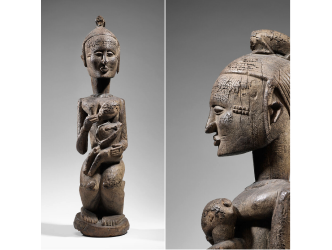Having the eye
To describe the relevance of an art collector, dealer or curator we tend to say they have “the eye”. There’s only a very small number of figures in the current art world who belong to this category. They are the ones who are able to penetrate the “truth” of an artwork from the moment it is born. How is it possible to know if one painting or sculpture, fresh from its author’s imagination, will go down in history?
Gertrude Stein
Because in order to be relevant it must challenge conventional wisdom. But who’s to say whether it’s “nonsense” or an enlightened display of the avant-garde? Who can claim to know that it will take its place in the collective memory of artistic creation? Modern history has produced certain heroes of this kind, capable of making predictions, such as the collector Gertrude Stein who was able to detect, in the distorted forms of the women on show, Picasso’s Les Demoiselles d’Avignon, a fundamental gesture.
L’atelier rouge
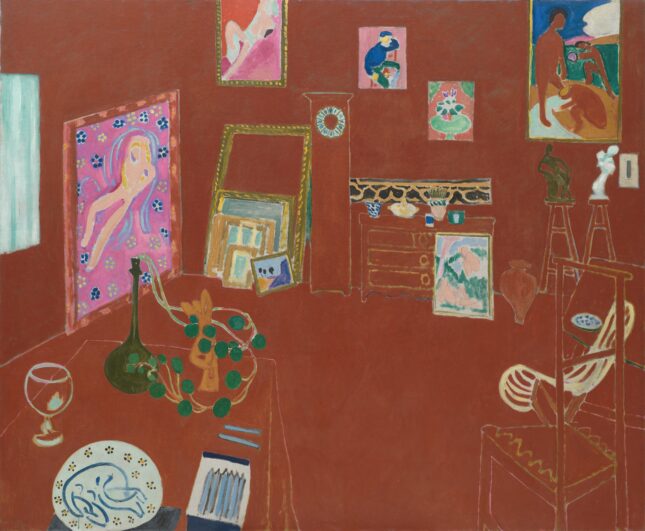
Henri Matisse
But it is also studded with errors: paintings that have been unjustly neglected. The Fondation Louis Vuitton is staging a captivating lesson in art history until 9 September, in the form of what almost resembles a police investigation. It is an exhibition that was staged a few months ago at Moma in New York, which looks at how a painting was regarded unfavourably for over 35 years before becoming a key focal point for contemporary artists. “L’atelier rouge” was executed in 1911 by the French artist Henri Matisse (1869-1954) who was then living on the outskirts of Paris, in Issy les Moulineaux.
Matisse is a genius
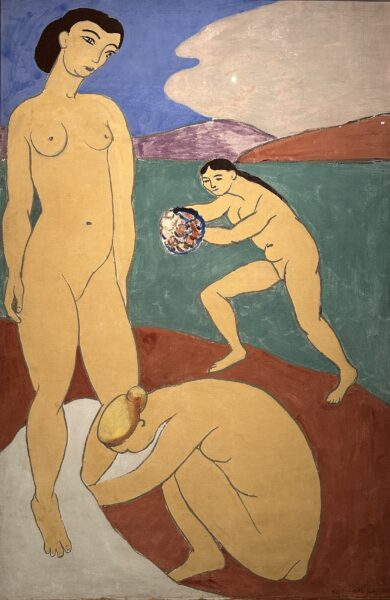
This canvas, an exceptional size for the artist at the time at nearly two metres tall and 2 metres long, is the subject of an extremely well-documented journey, because it would eventually elevate Matisse to the category of genius. A genius of colour. But it didn’t begin well.
Schukin
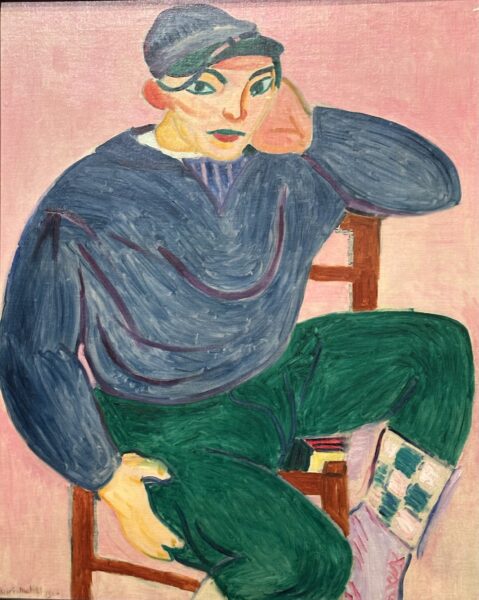
In 1911 the French artist had a quality patron in the figure of Sergei Ivanovich Shchukin, to whom the Fondation Vuitton dedicated an exhibition in 2016. He collected French art and went on to influence the painter’s career between 1908 and 1914. He commissioned two large-scale paintings from him, “La danse (II)” and “La Musique”, which brought Matisse a certain degree of financial stability and allowed him to build in the garden of his family home a prefabricated wooden studio. It was the interior of this structure that would be depicted in “L’atelier rouge”.
Too close to find the truth

In the catalogue from the Moma exhibition, Ann Temkin and Dorthe Aagesen cite Marcel Proust to justify the blindness the painting was met with for some time: “his contemporaries lacked the necessary perspective (…), as certain paintings are judged poorly when one is too close.”
First Gustave Moreau
We have to put things in context. As usual Matisse was caught in a phase of experimentation. He had already moved through several aesthetic stages. The son of a grain merchant from the North of France began to assert himself in 1895 on contact with the mystical and opulent painter Gustave Moreau. After a short period inspired by the impressionists, then the post-impressionists, there he was in 1904, involved with his comrades such as Derain in a movement known as the Fauvists.
Then Gauguin
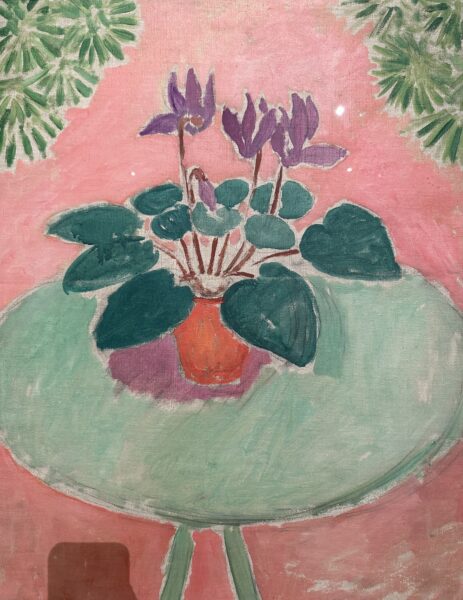
The fiery colours take over the breadth of the canvas as he discovered the shocking paintings of Gauguin after having carefully observed those of Cezanne and Van Gogh. In his compositions he also began to develop a powerful repertoire of decorative motifs. The seed of the great Matisse was already there.
L’atelier rose
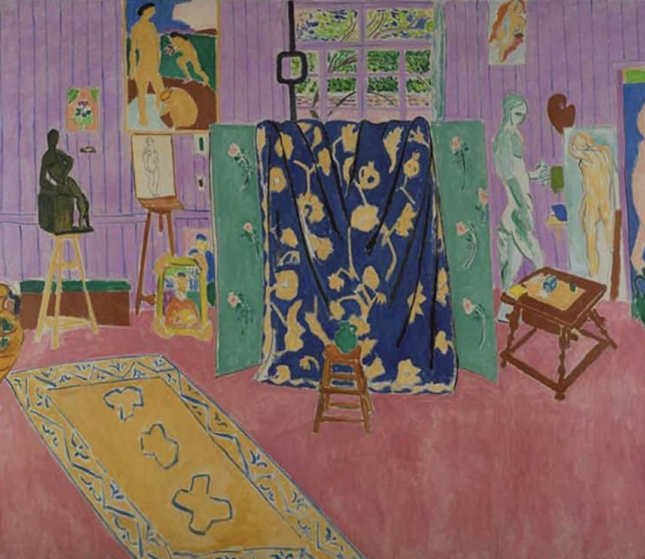
Shchukin commissioned another two paintings from him. In the spring of 1911 he made “L’atelier rose” which sums up the research he had undertaken up until that point. The work, which is now in Moscow at the Pushkin Museum, is not on display for the moment. Here the floor is pink, the walls are mauve, some artworks are scattered here and there but the main subject is the hard blue fabric striped with floral patterns in golden yellow, which dialogues with the carpet in the same hue.
Shade of oxblood red
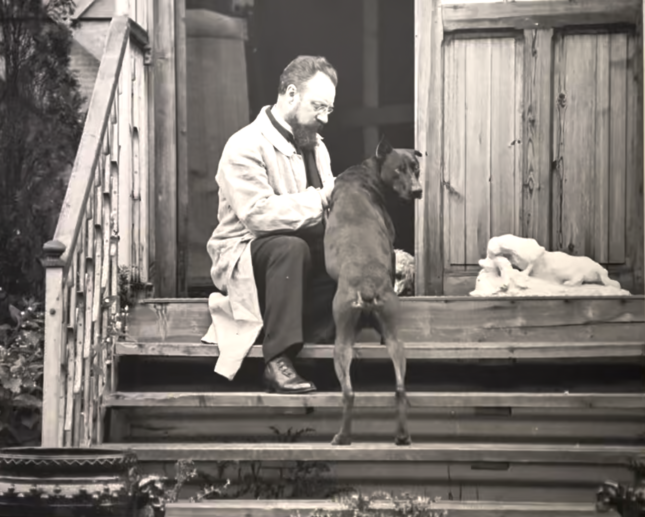
That same year he started a new “portrait” of his studio. It was not immediately called “L’atelier rouge”. Matisse called it “Panneau rouge”. It was a kind of summary of his oeuvre across 11 paintings and sculptures. But most significantly he literally infused the whole canvas with a shade of oxblood red. The artistic director of the Fondation Vuitton, Suzanne Pagé, talks about a “work that in the process of rupture. In ‘L’atelier rouge’ the background is the key to the work. The colour becomes a language. We see nothing but red.
Neutralizing the principle of representation
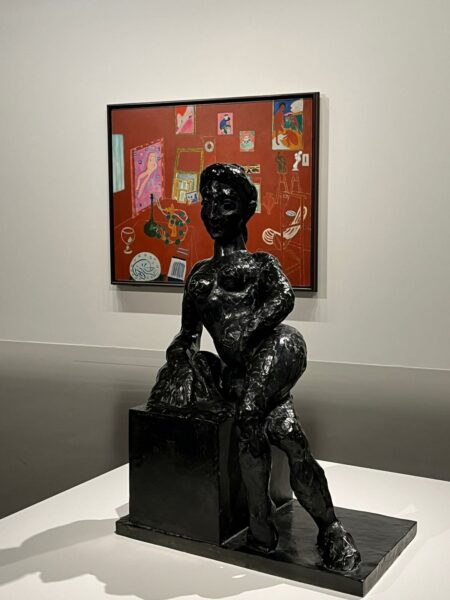
He succeeds here in neutralizing the principle of representation.” In the reality of Issy les Moulineaux, the walls of Matisse’s studio were grey. As explained by the teams at Moma, who undertook very extensive technical analyses, Matisse first painted the walls blue, the floor pink and the furniture ochre. The second stage involved covering everything in a Venetian red which he coated in a varnish to increase the shine.
Contours of the underlying colours
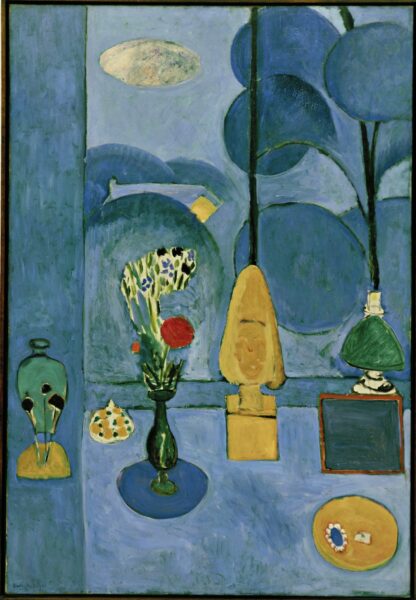
Look carefully: he deliberately left the contours of the underlying colours, as though they were ghostly forms. The artworks are depicted as though they’re almost floating in the monochrome space. The furnishings are reduced to outlines bathed in a great wash of crimson.
Odyssey of an unpopular painting
But this was too much for his Russian patron. He refused to purchase the canvas. A great disappointment for Matisse. This was how the “Panneau rouge” began its odyssey as an unpopular panting. In 1912 it was exhibited in London with no effect. In 1913 it was shown at the Armory Show, the major exhibition of avant-garde works in New York. Again, nothing happened.
In a private club
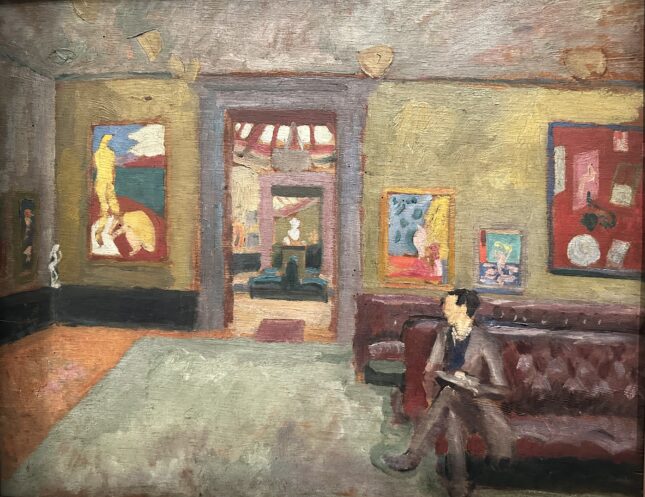
Roger Fry
It wasn’t until 1927 that David Tennant, the British founder of a private club, the Gargoyle club, bought it for his establishment. It seems he grew tired of it because after 11 years he suggested that Matisse buy back his canvas. Against all expectations, even the painter didn’t want to.
Finally the Moma

In 1945 the Bignou gallery in New York ended up buying it. The fresh air of the new world proved an advantage for such a radical work of art. Finally in April 1949 Moma in New York gave “L’atelier rouge” the honour it was due. The institution became the owner of the canvas.
Mark Rothko

Mark Rothko
The history of art is made up of many different strings tying one artist to another. This is how Mark Rothko, master of American abstraction, would frequently come to Moma to scrutinize the mystery of the 1911 canvas steeped in this deep red.
“This red is like a hot night indoors”
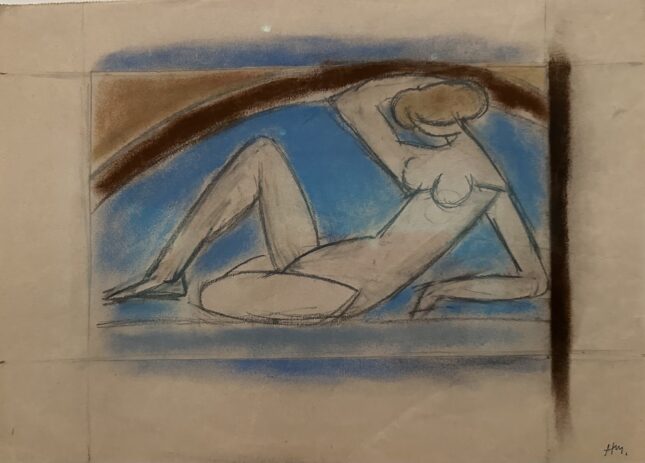
The poet Marcelin Pleynet cited Matisse on this subject (1): “I have always distrusted the masters, but I have passionately challenged them, and their lessons will be found in all my acts of audacity.” Matisse described his “Panneau rouge”, which became “L’atelier rouge”, as follows: “In my studio the floor is oxblood red like the Provençal tiles; the wall is red; it’s as though blood has seeped in and stained everything; the furnishings are red surrounded by a matte golden line. This red is like a hot night indoors when, entering through the window on the left, an intense light causes other objects to appear, or rather, resuscitate.”
A beautiful night, and one of the hottest in art history.
Ellsworth Kelly
At the same time, Ellsworth Kelly is the subject of a retrospective at the Fondation Louis Vuitton. It gives the keys to his abstraction, based on an observation of our reality.
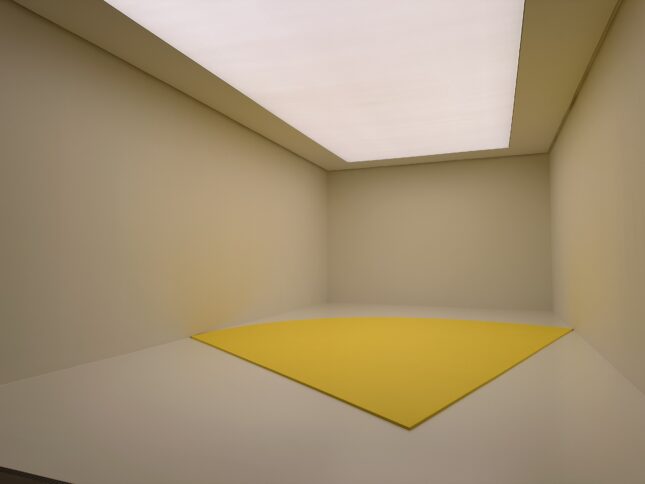
Ellsworth Kelly
The exhibition is all the more justified given that Kelly was a great admirer of Matisse. There is a conceivable link between Matisse’s drawings and those of Kelly. Kelly even curated an exhibition of Matisse’s drawings at the Gianadda Foundation in Switzerland. Here is a comment from the most qualified person on the subject, Jack Shear, widower of Ellsworth Kelly.
From 4 May to 9 September. www.fondationlouisvuitton.fr
(1) Henri Matisse, Marcelin Pleynet Folio essais. 1993.
Support independent news on art.
Your contribution : Make a monthly commitment to support JB Reports or a one off contribution as and when you feel like it. Choose the option that suits you best.
Need to cancel a recurring donation? Please go here.
The donation is considered to be a subscription for a fee set by the donor and for a duration also set by the donor.




